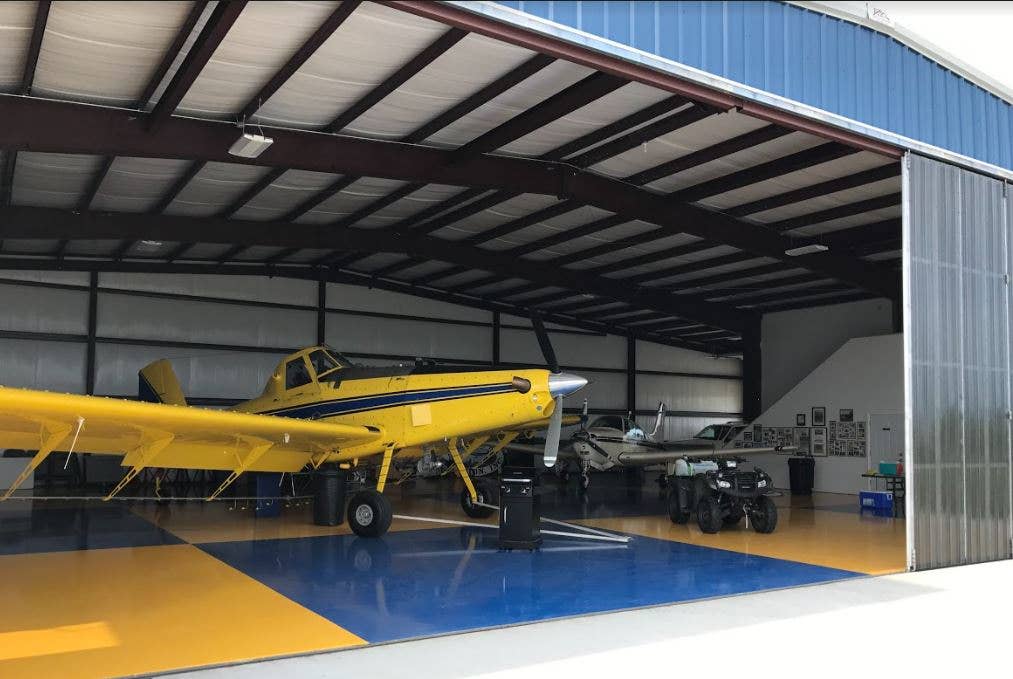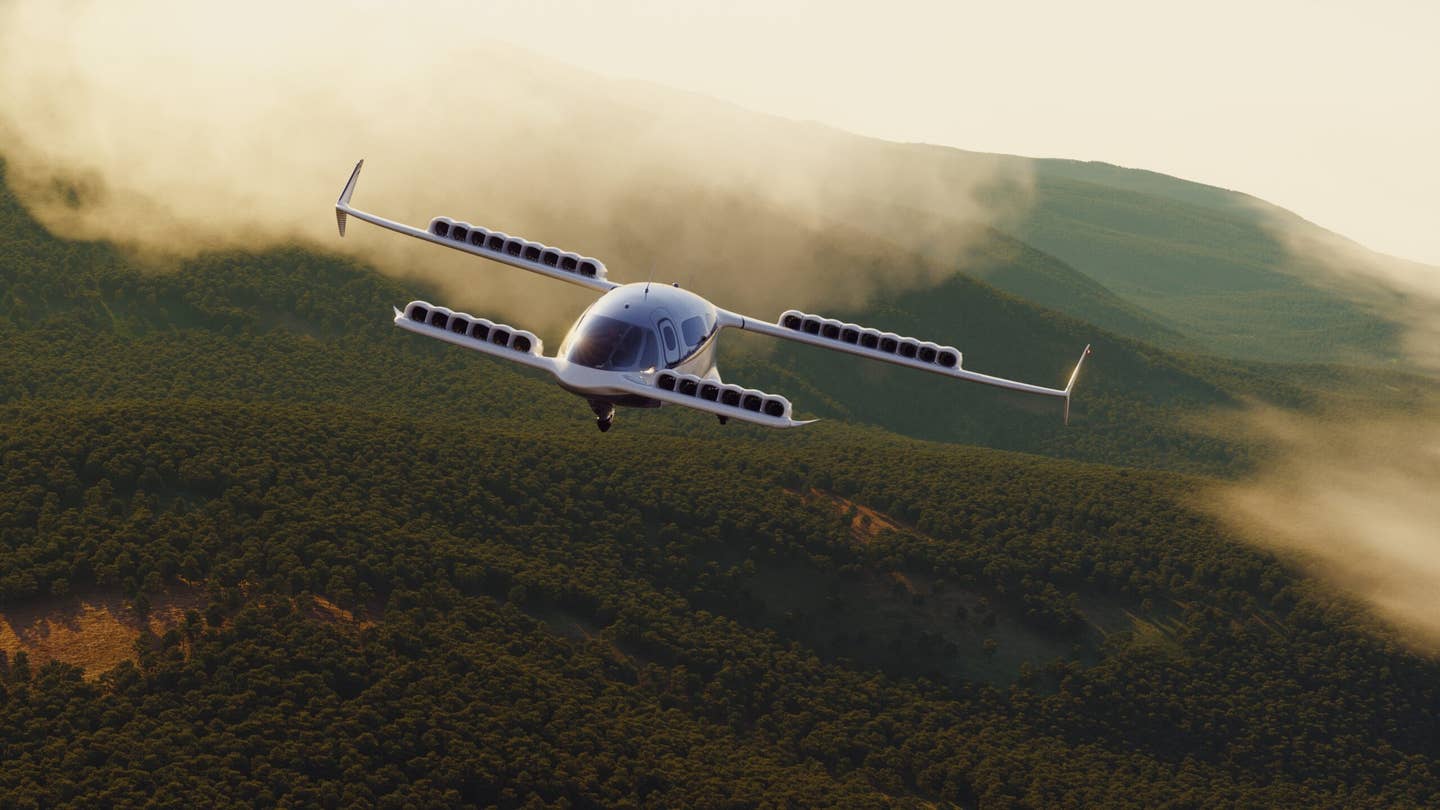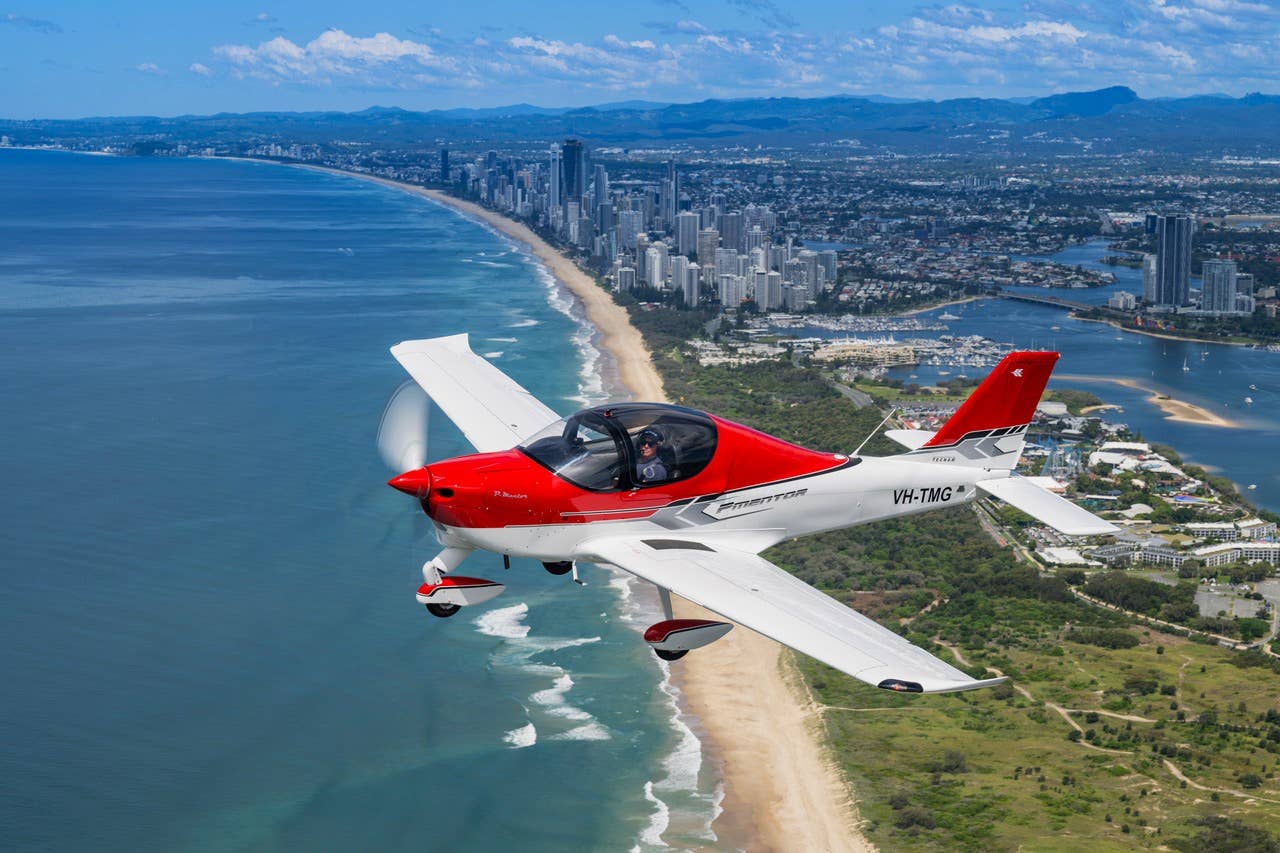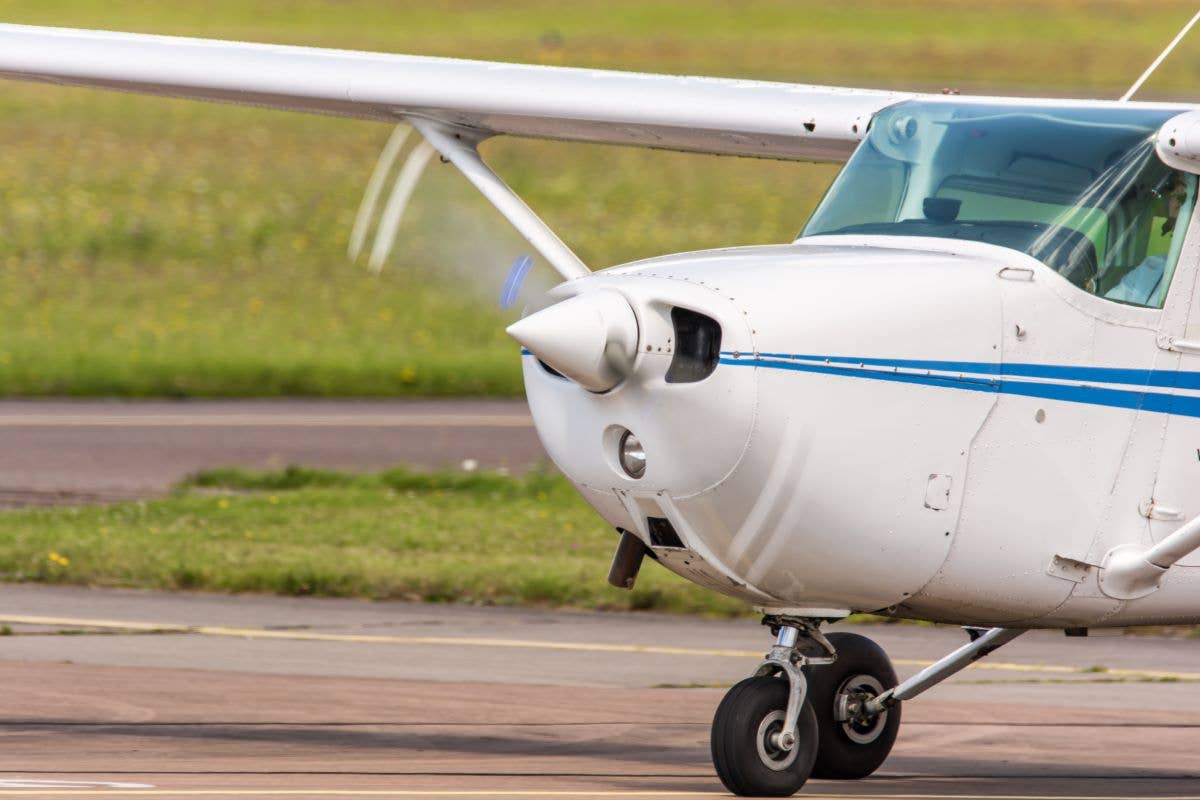Illinois Airfield Keeps Midwest Agriculture Business Going
When the owner bought Tuscola Airport, improvements began almost immediately.

Atlantic Ag Aviation’s hangar at Tuscola airport. [Photo: David Hrupsa]
If you drove through the small town of Tuscola, Illinois, in the summer, you would think that the county seat of around 4,500 residents had no airport. And you would be safe to assume that. Unless you see a swarm of crop dusters take off seemingly out of the shoulder-high Illinois cornfields.
There is an airport somewhere in there. It sits just south of U.S. Highway 36, one of the two major thoroughfares that form the town’s southern and eastern borders. That said, there are about a mile of fields that separate this major roadway from the runway. And when there are mature crops between the two—especially corn—the airport is almost invisible to the average person passing by.
David Hrupsa, an ag pilot of 35 years, owns the public-use aerodrome that he simply highlighted as being, “...very beautiful with a charm to it.”
Not originally from Illinois, Hrupsa said when he first learned of the airport, he didn’t know much about the state—not even how to pronounce its name.
“In North Carolina, where I was spraying previously, there were some young guys there who were selling seed corn. They told me that I needed to be in the Midwest spraying fungicides and mentioned Illinois. I used to say ‘Illinoise,’ instead of Illinois, and didn’t know anything about it, except that Chicago was there.”
Nonetheless, Hrupsa followed the tip and visited several communities in the state. He eventually connected with a farmer who introduced him to Tuscola. As they say, the rest is history. This farmer wound up being Hrupsa’s first Midwestern customer.
About Tuscola
Tuscola is located in an agriculture-heavy state. A majority of Illinois’ total land area is farmland. So, the centrally located town was a good place for Hrupsa to set up shop. While the region also fields soybeans and other crops, corn is a major focus—both for local farmers and the crop dusters that support them.
K96, as noted on sectionals, turns out to be a great base for an agricultural aviation outfit. With that in mind, there was not one operating from there at the time, even though the site had quite a bit going for it. Tuscola Airport boasted a 2,660 ft runway with ample parking space and some existing hangars. The icing on the cake was that locals were welcoming of the prospective aerial agricultural services originating from the airfield.
So, in 2007, Hrupsa established an Illinois branch that now serves farmers in several counties, and Atlantic Ag Aviation’s work has had a considerable impact there.
“Spraying is very important to the farmers in the area. We are a part of their toolbox. Fungicides on corn increase yields significantly, for instance sometimes in the range of 35 percent plus.” Additionally, spraying from aircraft, rather than by ground implement, is the most efficient avenue. As explained by the National Agricultural Aviation Association (NAAA), “At a minimum, an airplane or helicopter can accomplish three times as much application work as any other form of application can.”
Buying the Airport
Loading the chemicals into the aircraft prior to each flight eventually led to Hrupsa’s airport acquisition opportunity. Desiring a new loader pad—a designated place to load chemicals into the aircraft—he needed permission to add one. So, he called the previous airport owner and asked if he could build one there. The reply varied slightly from an outright “yes.”
It went something along the lines of if Hrupsa purchased the airport, then he could do just that and much more. And that is just what happened in 2010; Hrupsa bought the airport and immediately got to work on constructing an EPA-approved chemical loading site. This has helped his business load its and subcontractors’ airplanes during spray season more efficiently.
Aircraft operations there aren’t limited to Air Tractors and other manufacturers’ sprayers, though. Just as any other general aviation airfield, traffic varies significantly. One of the regular visiting aircraft is Hrupsa’s 1966 Beechcraft V35 Bonanza, as he is a part-time resident of the town.
“At Tuscola Airport, there is a fair amount of transient traffic. There is also local traffic and people own the hangars here, although I own the land underneath it,” Hrupsa said. “Everybody is happy with the arrangement. We have about 12 airplanes based here currently, and basically all the existing hangar space is spoken for.”
The Community
Other than being in a convenient location for pilots nearby or passing through, there are other qualities that make the airport an attractive option for aviators. Serving Tuscola and surrounding towns since at least 1954—when it was first activated—the airport has grown to be a tight-knit, vibrant community.
Today, it boasts a self-service fuel station (offering 100LL), as well as hangars of varying types, including a large box hangar that was constructed under Hrupsa’s ownership. Another important aspect of the airport is the now asphalt runway, which was completed in 2014.
Previously oil and stone, the repaving efforts were completed after the 16-acre property changed hands.
“We receive no federal or state funding for the airport. All improvements and operations are privately funded by myself,” he explained. Overall, owning the airport has allowed Hrupsa to better support Atlantic Ag Aviation’s crop-dusting efforts in the state.
During its peak time of the spraying season, there are usually seven crop dusters operating from Tuscola’s airport. Aptly named the “corn run,” these few weeks attract ag pilots from near and far with the promise of sunup to sundown fungicide spraying. Hrupsa noted,” This usually happens right after the Fourth of July. And around the 10th, things are really going.
“We have sprayed as much as 15,000 acres in one day from Tuscola,” he said. “Usually, we average around 1,800 to 2,200 acres per plane every day. Each load is around 450 gallons [of mixed chemicals] and about 220 acres are sprayed per load. We land just about every hour and burn roughly 52 gallons of fuel during that time.”
Hrupsa’s evolving business ventures include the pickup of another local airport about 45 minutes north of Tuscola. The addition of Paxton Airport (1C1) in 2020 is a familiar story.
“The main reason to buy the airport was to be able to improve it and positively impact the community,” Hrupsa said. “I was working out of Paxton and an older gentleman who was there mentioned to me, ‘I sure wish you could buy the place and do with it what you did in Tuscola.’ I replied that I didn’t know it was for sale. The mayor of the town called me that night and I gave him an offer.”
Just as he had in Tuscola, Hrupsa got to work right as soon as the ink dried on the purchase contract. Within the last year at this most recent airport acquisition, pilots have seen the addition of a self-service fuel station. He also has future improvements in mind.
“In Paxton, I’m planning on another hangar and asphalting it [the runway] as well.”

Sign-up for newsletters & special offers!
Get the latest FLYING stories & special offers delivered directly to your inbox






